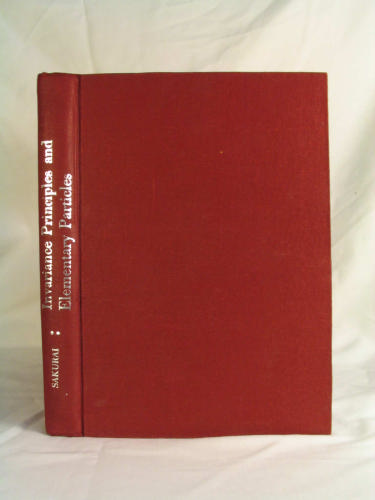Invariance Principles and Elementary Particles pdf free
Par mercer frances le jeudi, juin 30 2016, 14:30 - Lien permanent
Invariance Principles and Elementary Particles by Sakurai J.J.


Invariance Principles and Elementary Particles Sakurai J.J. ebook
Publisher: PUP
Page: 338
ISBN: 0691079870, 9780691079875
Format: djvu
The symposium began with a focus on work at Dubna, starting with the unveiling of a monument to Vladimir Veksler, who invented the principle of phase stability (independently from Edwin McMillan in the US) and founded the 10 GeV Synchro- phasotron in The dipole moment of fundamental particles violates both parity and time-reversal invariance. Since the early days of quantum mechanics, and even the old quantum theory, people knew that particles and waves were just two aspects of the same thing. In this 1980 book the concept of symmetry or invariance is employed as a unifying theme in the properties and interactions of the elementary particles. Quantum physics suggests that a vacuum is anything but empty, with virtual particles regularly popping in and out of existence within Planck instants of time. One of the difficulties here concerns how the PDFs evolve with a change in the wavelength of the probe particle. A theory of fundamental particle interactions built from the gauge invariance principle alone doesn't allow the existence of massive gauge bosons. An understanding of the properties and interactions of the elementary particles is an essential prerequisite of research work in high energy physics. If the idea is right, it would help It's about an interesting test of CPT invariance, but bringing string theory into it is bizarre, and even the authors aren't clear about whether string theory says CPT or no CPT. The findings could have implications for superstring theory — the idea that all fundamental particles are actually loops of vibrating string — which is one attempt to unify nature's forces and create a theory of everything. These relationships could be found by "pure thought" of sufficiently intelligent observers, at least in principle. Much progress in the subject has been achieved with the aid of symmetry principles. This potential catastrophe is prevented by gauge invariance, and the only possible gauge invariance for spin-2 fields is general covariance (diffeomorphism symmetry) of GR. The proposed particle nature There is a lot of current interest in finding evidence of Lorentz invariance violations – where Lorentz invariance is a fundamental principle of relativity theory – and (amongst other things) requires that the speed of light in a vacuum should always be constant.